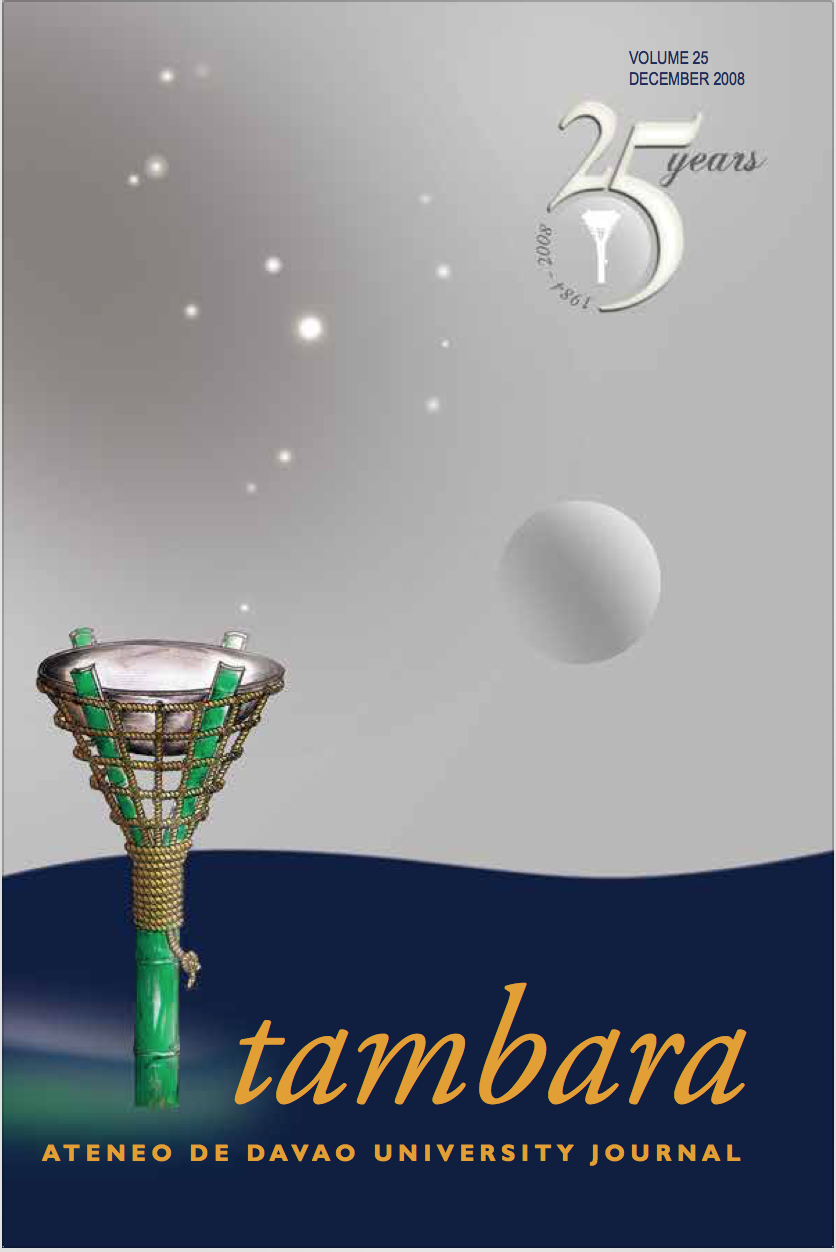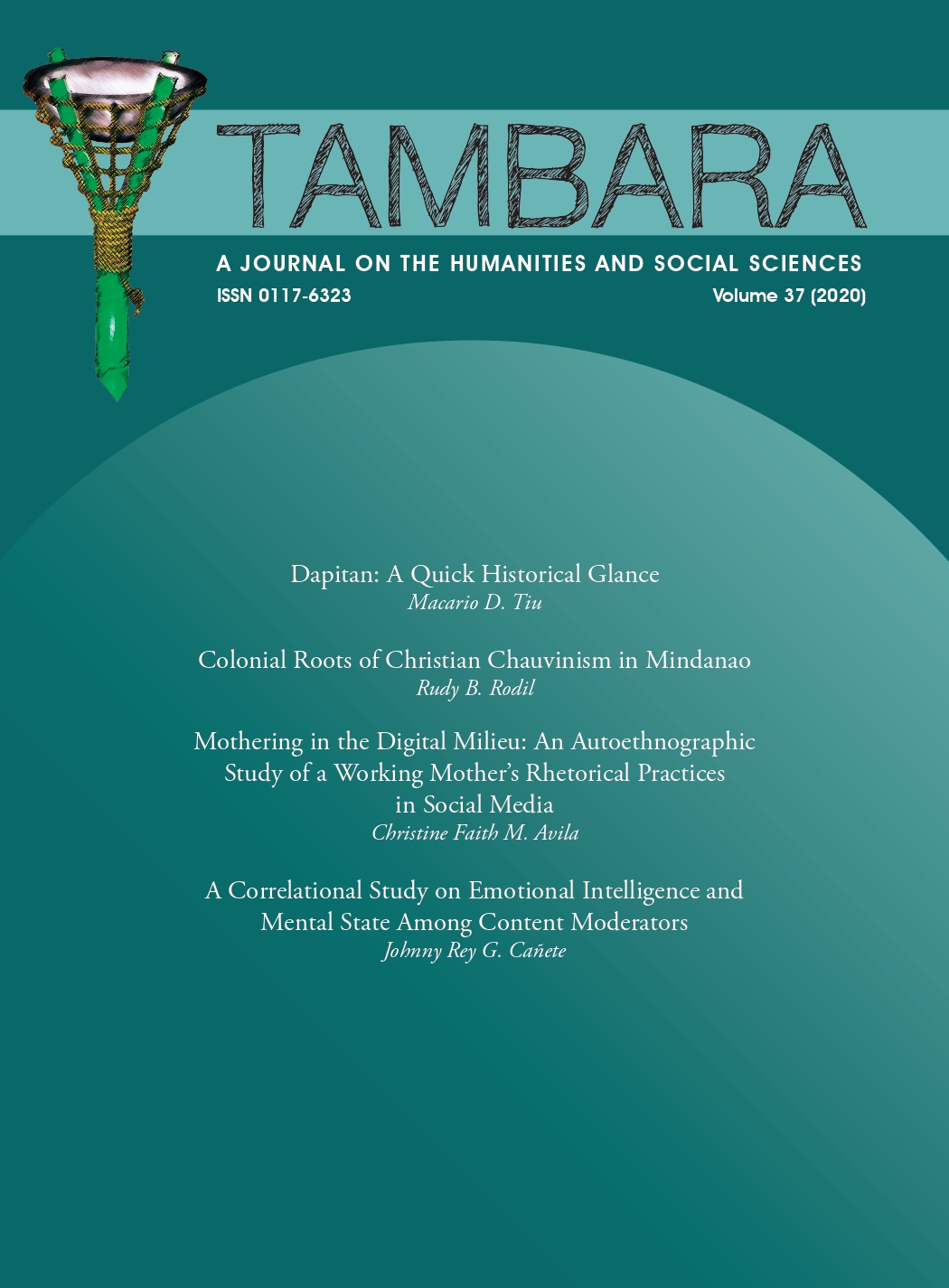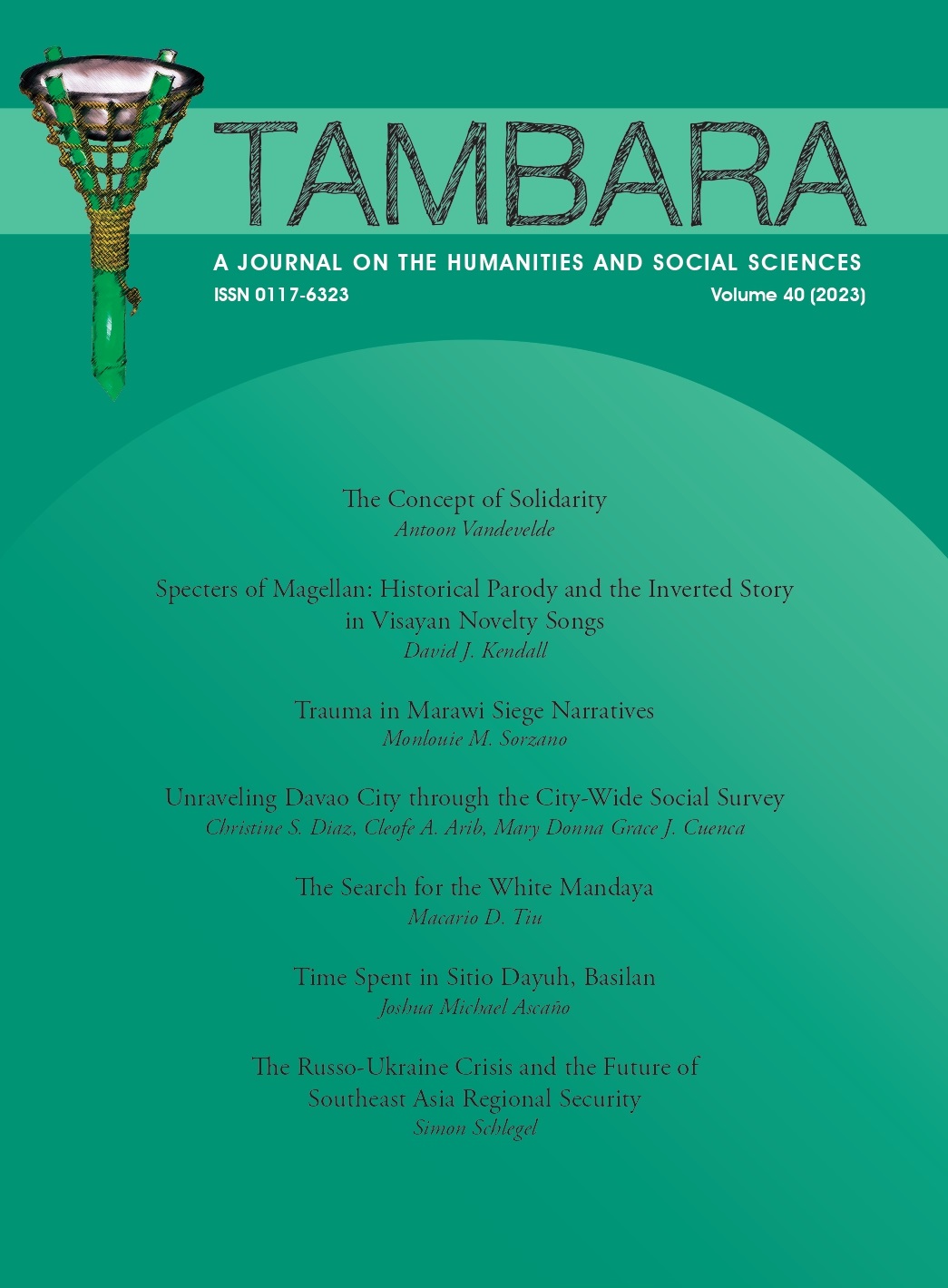What is Tambara?
Tambara is a peer-reviewed journal of the Ateneo de Davao University released every year. It aims to provide a forum for vibrant and informed public discourse on various pertinent issues—theoretical and practical—affecting Mindanao and beyond among established as well as aspiring scholars. It publishes original articles, editorials, and review essays in the areas of humanities, social sciences, philosophy, and theology. Replies to articles are also welcome.
This journal has borrowed the Bagobo word ‘tambara’ to emphasize the commitment of the Ateneo Community and the larger Mindanao region as a Filipino, Catholic and Jesuit University.
“When the balatik appears in the sky, it is time for the yearly sacrifice. All who are to prepare new fields or are to assist others in such work gather to take part in the ceremonies honoring the spirits. For three days, the men abstain from work. No music and dancing are allowed. With the ending of the period of taboo, the workers go to the fields and in the center of each, they place a tambara, a white dish containing betel nut. This is an offering to Eugpamolak Manobo, besought to drive away evil spirits, keep the workers in good health, allow an abundant crop, and make the owners rich and happy.” (Faye-Cooper Cole)



Short History of Tambara
In its fourth decade of existence as an academic journal, Tambara has published extensively on multidisciplinary discourses on various pertinent issues—both theoretical and practical—affecting Mindanao and beyond.
Tambara was founded at Ateneo de Davao University (ADDU) in 1984 under the helm of Dr. Heidi K. Gloria, who served as its first editor-in-chief. In the early years, she was assisted by Fr. Robert C. Hogan, SJ, and Fr. Pasquale Giordano, SJ, as associated editors. After seventeen years, Dr. Macario Tiu succeeded Tambara’s editorship in 2001. In the six years of Dr. Tiu’s term, he guided Tambara’s transition as it promoted and published extensive researches from both within and outside the Ateneo academic community. Those serving as associate editors during this period were Gail T. Ilagan, Rex T. Rola, Renante D. Pilapil, and M. Isabel S. Actub. In 2007, Fr. Albert Alejo, SJ, briefly assumed the editorship. Then, Ilagan and Actub assumed the role as co-editors in the same year after Alejo’s departure from ADDU due to a change of assignment. Ilagan was then appointed editor-in-chief for four years. Other associate editors who joined Tambara’s editorial board in 2010-2011 were Pamela R. Castrillo and Patricio N. Abinales.
Sometime in the first decade of 2000s, Tambara received accreditation from the Commission on Higher Education. Structural changes under the presidency of Fr. Joel E. Tabora, SJ impacted Tambara’s organizational alignment as an office. Since its founding in 1984, it had been under the Office of the President. But following the creation of the University Research Council (URC), Tambara has since been aligned under the URC starting 2011.
Meanwhile, Dr. Pilapil returned as editor-in-chief in 2012 after his doctoral studies in Europe. In the second year of his term, Tambara made distinctive changes by publishing two volumes per year, instead of the usual one volume. It also featured a new layout and other format changes, marking its transition. More importantly, it redefined its identity. Up until 2012, Tambara had been known simply as an “Ateneo de Davao University Journal.” In 2013, Tambara called itself “A Multidisciplinary Journal.” From the following year (2014) until the present, Tambara has identified itself as “A Journal on the Humanities and Social Sciences.” Along with this new identity, Tambara became a peer-reviewed academic journal by constituting an International Advisory Board—a community of scholars, as well as editors of other local and international peer-reviewed journals from Europe, North and South America, and Asia—to assist in the screening and reviewing of potential journal article submissions for publication, in the areas of humanities, social sciences, philosophy, and theology.
Joining Dr. Pilapil’s editorship, Actub came back as associate editor from 2012 until present, in tandem with Dr. Christiane Diaz (2012-2013). Then Rhoda Ranalan joined the editorial board from 2014 onwards. The current addition to the board is John Harvey Gamas, who was appointed in 2024.
Meanwhile, Tambara reverted to publishing one volume per year after it released a special issue in 2018, marking the 70th Anniversary of the Ateneo de Davao University. Another special issue was released in 2022, where Tambara published the book of then University President, Fr. Tabora, titled “Raising Quality Education in the Philippines: Selected Speeches & Writings which won a national book award. Both special issues were in partnership with the University Publications Office (UPO).
